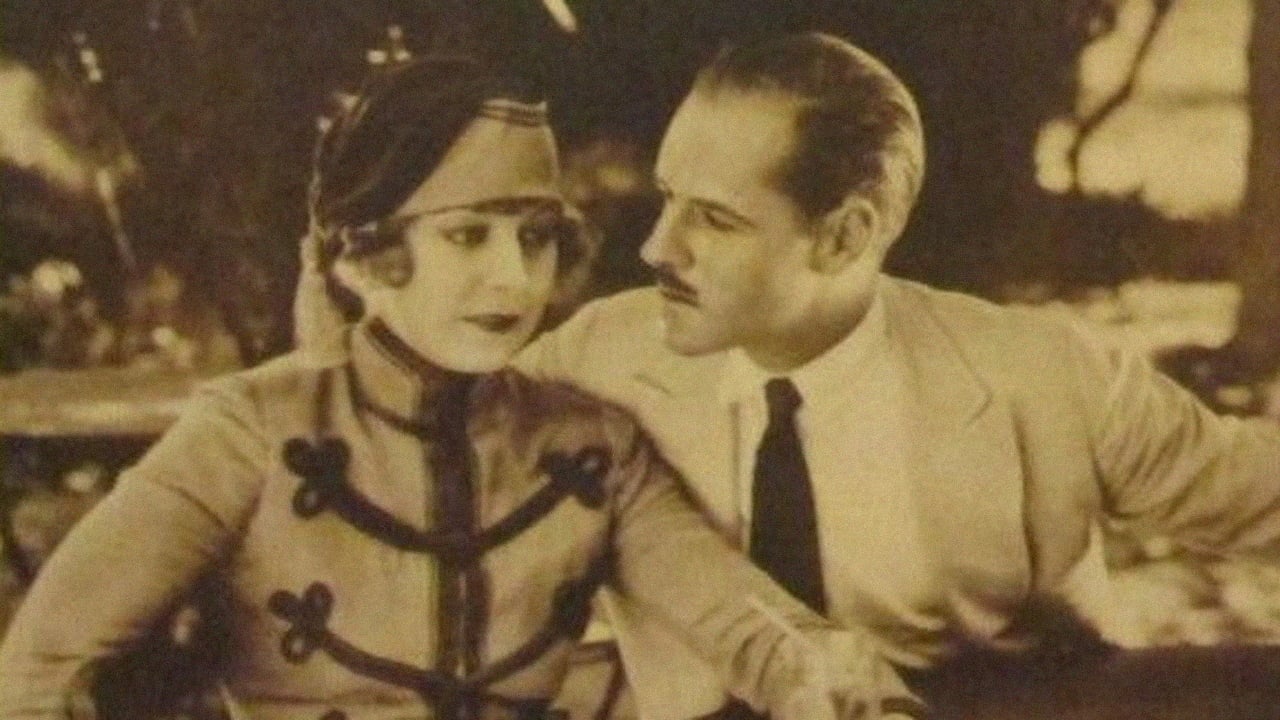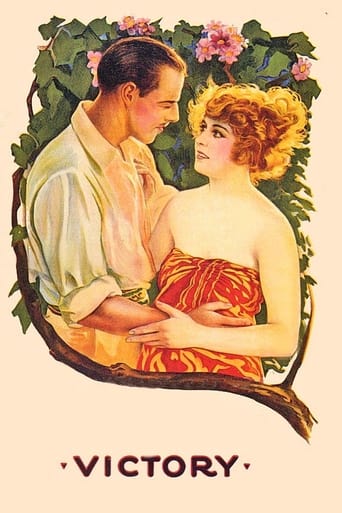



Tied for the best movie I have ever seen
Simple and well acted, it has tension enough to knot the stomach.
View Moreif their story seems completely bonkers, almost like a feverish work of fiction, you ain't heard nothing yet.
View MoreAfter playing with our expectations, this turns out to be a very different sort of film.
View MoreMaurice Tourneur was a gifted and sensitive director, who also directed Lon Chaney in "Treasure Island". Tourneur's films had great visual appeal through his mastery of set design and lighting. It is very apparent in "Victory". Lon Chaney was on the brink of stardom in 1919. He had just given a break through performance as "the Frog" in "The Miracle Man" and in 1920 would shock everyone with his role as "Blizzard" in "The Penalty". In "Victory" he was surrounded by established players - Wallace Beery, Jack Holt, Bull Montana and Seena Owen, who had starred as Princess Beloved in "Intolerance" (1916), but he still managed to make his mark.Axel Heyst (Jack Holt) lives on a solitary island, surrounded by his father's books. He feels that only by being an observer of life rather than a participator, can he find true peace. While staying on another island to finalize some business, he comes to the aid of Alma (Seena Owen) who is a violinist in the local band. She is being pursued, not only by Schomberg (Wallace Beery) but the band leader as well and begs Axel to take her to his island so she can escape. Axel agrees.Schomberg goes on a thorough search of the island and as a last resort, hires 3 thugs who have been causing havoc at his hotel. He wants them to go to Axel's island to search for Alma and lures them there with tales of hidden treasure. Lon Chaney is almost unrecognizable as Ricardo, a knife carrying crazy, who tells how Pedro (Bull Montana) can "snap men's back's like rotten sticks". Bull Montana is scary as the cretinous Pedro, who throws a boat boy overboard and carries his luggage around between his teeth!!!When they reach the island, Ricardo attacks Alma but she fights back with such force that Ricardo is full of admiration and asks Alma if she wants to come in with them for a share of the treasure. Ever since she has been on the island she has felt lonely. Axel is not interested in getting to know her so she pretends to throw in her lot with the thugs hoping to save Axel.With the smoldering volcano as background violence is let loose. Ricardo is shot on the roof and falls into a pit - in real life Chaney, who did all his own stunts, missed the pit when he fell, knocked himself out but still insisted that he complete the scene when he came to!!! Pedro throws Mr Jones into the fire because "when you killed that man in South America - he my brother"!!! It ends conventionally enough with Axel realizing that Love is the most powerful emotion.Highly Recommended.
View MoreVictory (1919) ** 1/2 (out of 4) Axel Heyst (Jack Holt) lives on a deserted island where he prefers to be alone. One day he travels to town where he meets an abused woman (Seena Owen), takes pity on her and brings her back to his island. Soon her owner (Wallace Beery) sends three criminals after her. The main note here is that Lon Chaney plays one of the criminals and, as usual, he does a very nice job showing off that evil side. Holt, Owen and Beery also give fine performances, which is pretty much the only thing this film has going for it. There's some nice visuals and a nice looking erupting volcano but the story starts to drag in the middle. Directed by Maurice Tourneur.
View MoreJoseph Conrad's 1915 novel "Victory" is a complex treatment of life-denying philosophy, human wickedness and the power of love. It's very interesting to see its first movie version, done in 1919 and probably only known today since Lon Chaney on his to way to fame did a good performance of the crazy villain Ricardo in it.But all in all this movie is a disappointment. The script reduces the novel to a quite silly and simple love and adventure story, where in the ending (different from the novel) Heyst, the lonely reclusive on the island, has learned to "hack and slay for his woman", as one of the silly intertitles says. The movie never works because there are too much intertitles, clumsily interrupting the action, and the plot of the novel gets spread out in fast forward without any care for detail or atmosphere. Just look how the character of Ms. Schomberg got changed! The acting is OK overall, I guess, since the actors haven't any chance because of the bad script. Photography is good and sometimes great, which gives the movie somewhat of a raw power, but the scriptwriter and the director obviously wanted to make Conrad's novel into an exotic and simple adventure story on all costs. The booklet of the Image Entertainment DVD call the director "gifted", but I can't see much talent in this superficial, silly movie.I wonder if Joseph Conrad saw this movie and what he thought of it. I guess he hated it. If you want to see a surprisingly good - in fact, it's great - movie version of this novel go and see Mark Peploe's 1995 version.
View MoreMaurice Tourneur's VICTORY was made only four years after the publication of the source novel by Joseph Conrad, and features silent film sensation Lon Chaney in an early co-starring role.When pre WWI isolationist Jack Holt steals a girl away from predatory hotel permitee Wallace Beery, Beery sics a trio of island-hopping fortune hunters on him. Lon Chaney steals the film as the shiv-shoving Ricardo, but Seena Owen is his equal as the desperate but clever Alma. Jack Holt is the jut-jawed hero, Bull Montana (the "ape man" of 1926's THE LOST WORLD, which starred Beery) a simian heyboy and Ben Deeley is the languid, almost Ernest Thesiger-like villain of the piece.Jules Furthman's script simplifies Conrad's novel, and provides a much happier ending, but it's still surprisingly faithful and Conrad's witty butfatalistic voice rings loud and clear.
View More